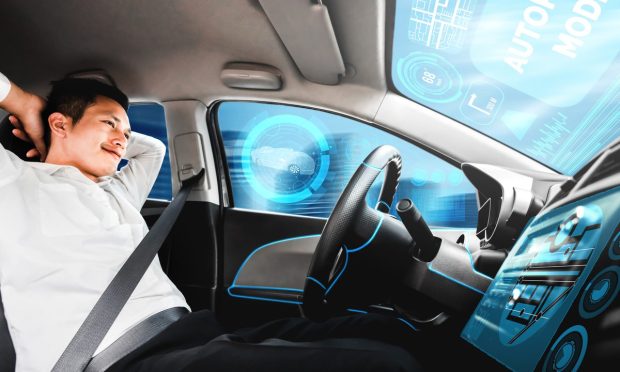Auto Industry Sees Windshields As New Augmented Reality Platform

Drivers can expect to see augmented reality images on the windshields of more vehicles in the coming years. Three partnerships announced over the last month aim to produce head-up displays that put information on the windshield in the driver’s field of vision so that they don’t have to take their eyes off the road.
Augmented reality superimposes digital images upon the real world that the user sees through a screen. In the case of head-up displays, which are also called heads-up displays, that screen is the windshield.
The companies that made the recent announcements about head-up displays noted that this technology enables them to deliver safety alerts and navigation information via digital images in the driver’s line of sight. One said it plans to also provide information about points of interest along the way to passengers.
A head-up display offers the driver “a window into a never-before-seen blend of the virtual and the real world,” Vitaly Ponomarev, founder and CEO of WayRay, said in a Dec. 14 press release announcing the company’s partnership with electric vehicle producer Karma Automotive.
Making Driving More Safe, Informative, Entertaining
WayRay and Karma will collaborate to incorporate WayRay’s True Augmented Reality (True AR) and Deep Reality Display technology into future Karma vehicles. This technology generates virtual images on multiple depth planes, integrating them into the real world. Applied to Karma’s vehicles, it will give drivers information they need and give passengers animated points-of-interest data.
“WayRay’s technology will make driving vehicles safer, more informative and entertaining,” Shen Zhang, vice president, electrical and electronics engineering at Karma Automotive, said in the press release.
In another recently announced partnership, StradVision and LG Electronics will develop a cockpit instrument platform based on augmented reality. This solution will incorporate StradVision’s camera perception software SVNet, which among other things enables vehicles to detect objects outside the car, even in harsh weather conditions and poor lighting.
“We look forward to further expanding our collaboration with LG Electronics to develop cutting-edge technologies for a safer road environment and discover new business opportunities,” StradVision CEO Junhwan Kim said in a Friday (Dec. 17) press release announcing the partnership.
Creating a Safe and Immersive Experience
The company reported that more automakers are looking to adopt augmented reality solutions into their vehicles because it allows drivers to keep their eyes on the road and perceive their surroundings accurately.
Another component of augmented reality systems is offered by Spectralics, an optical and imaging technology startup that Volvo Cars recently invested in through its Volvo Cars Tech Fund. One of Spectralics’ products is a thin optics film that can be applied to transparent surfaces.
When applied to a car’s windshield, it can then overlay images such as those used for a head-up display. Volvo Cars noted that this superimposes images upon the real world in the driver’s line of sight to create a safe and immersive experience.
“Spectralics is an exciting company with technology that holds truly great promise,” Henrik Green, chief product officer at Volvo Cars, said in the Nov. 23 press release announcing the investment. “By supporting their development, we can bring forward the potential their products could have in future Volvo cars.”
